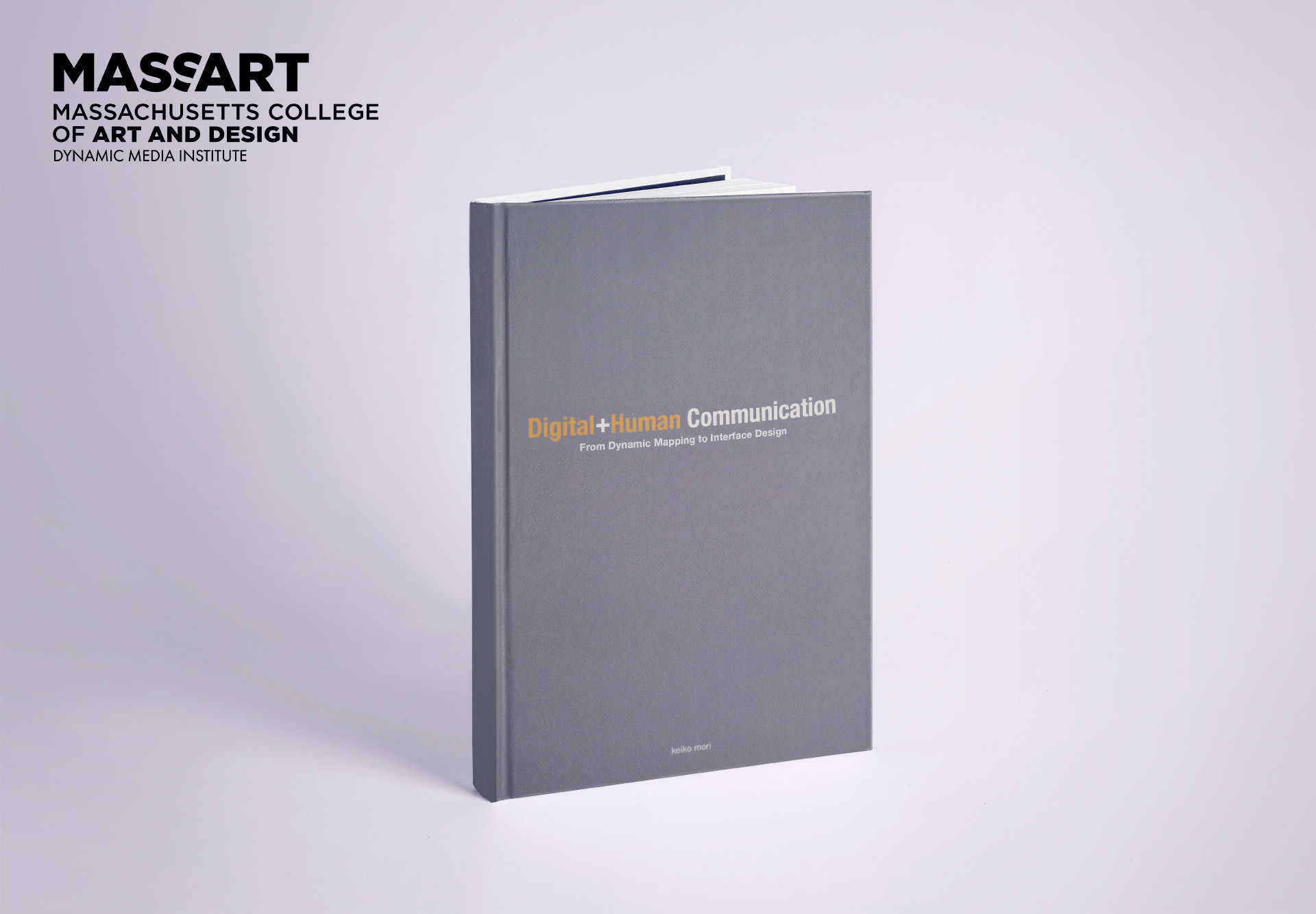Keiko Mori, MFA ’05
thesis abstract
Computer-mediated communication systems today focus too much on convenience, such as speed and efficiency, and filter out the important elements of human communication, such as physical space, gestures, emotions, and individual uniqueness. Using dynamic mapping as a methodology, my thesis investigates how we can inject richer nuances of human communication into online communication systems.
Introduction
New media designers deal with information all the time. In the field of new media, anything can become information. Your experience in reading this thesis becomes information. The sound you hear while reading this thesis becomes information. The shift in your attention from reading to hearing becomes information. Information is the raw material of things, events, actions, and thoughts in our world. Our job as new media designers is to take this information and translate it into a form or an experience which will then become users’ knowledge.
What is the information I am translating in this thesis, Digital+Human Communication? It is the abstract question of what we gain and what we lose in our digital communication. This question takes us back to the year when I was seventeen. It was the year when I got my first cell phone in Japan. We did not have the technology of text messaging from cell phone to cell phone back then, but I remember I was still fascinated by its convenience and its ability to connect us no matter where we were. Once the technology of text messaging came into our lives, we started communicating through text messaging more than talking on the phone. As the communication technologies improved, I became concerned about how we were becoming more and more disconnected from each other by losing the nuances of human communication. I experienced this the most when I saw my friend breaking up with her boyfriend through text messaging. Since then, I have been questioning what we gain and what we lose with those technologies in our communication.
In the translating process, what is important is to have a specific point of view. This becomes important especially when the information is abstract. As a starting point of my translation process, I developed my point of view towards the information: Along with the gained elements, applying the lost properties of our real-space communication into online communication systems will enrich our communication and experience in the digital space. In my thesis, I am focusing on the media of the Internet because it is the great technology to connect people who are geographically dispersed. It is also because of the huge demand for the media in our communication.
Information is often dynamic since everything in our world exists in time. It is rarely fixed. It grows and becomes complex. Our role as new media designers is to understand the dynamic information, translate the complex to the simple, and carry over the dynamic nature of the original information to the result of the translation. My thesis deals with our communication, which is dynamic in its nature. It is dynamic not only because it exists in time, but also because it contains various vocabularies each of those interrelate with each other. However, in the currently existing online communication systems, this dynamic nature of our communication gets flattened, and so many rich nuances of human communication are filtered out.
My goal in this thesis is to bring the dynamic nature of our communication back into the digital environment. As a way to understand and translate this dynamic information into the users’ experience and knowledge, I applied the method of dynamic mapping, which you will see in the first chapter, Mapping to Visualize. The case studies in this chapter do not deal with communication, but focus on this idea of mapping as a way to translate and visualize information. In the following chapters, New Visualizations for Online Communication and New Visualizations for Online Collaboration, I explore our dynamic communication in the digital space by applying various properties of our real-space communication.


